12/1/2017
Houseplants Are Hip
Ellen C. Wells
No need to rub your eyes, folks. You are not dreaming, nor have you been transported back to the hip and herbaceous ’70s. What you’re seeing on the cover and on these pages is the here and now. Houseplants are back—and they are back with a vengeance.
I spoke with six individuals whose lives are entwined in houseplants in some way. Grower, retailer, e-sellers, guru, knot maker—all give their opinion on why foliage is the latest fad.
The
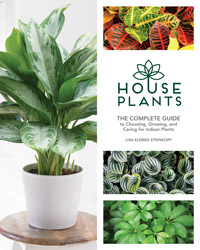
Houseplant Guru
Lisa Eldred Steinkopf, author of the blog "The Houseplant Guru" and also recently released book Houseplants, married into the garden center business but has been a houseplant fanatic “forever.” She sees kids and young adults mobbing her plant sales and attributes it to the fact that they know plants are “healthy, help them breathe and it’s something they can take care of” without it being a dog or cat. She sees them totally enamored with succulents but, “All you have to do is go to Instagram to see what’s popular with houseplants.”
What can retailers do to make the most of the trend? Offer classes, make it inexpensive and make it exciting, Lisa advises. Also, be sure to have the accessories—interesting pottery, plant stands and macramé hangers—plus bring in crafters who can show them how to make all that stuff, too. And above all, have someone in store who is knowledgeable about houseplants.
Pictured: Lisa Steinkopf’s Houseplants details more than 125 different houseplants and helps readers become a homegrown houseplant hero.
The Online and In-store Retailer
Eliza Blank founded New York City-based The Sill in 2012. The Sill started off selling plants via e-commerce and literally delivered potted houseplants by hand to local addresses. They now deliver houseplants nationwide (still looking for their first delivery in North Dakota!), have a plant store in NYC’s Chinatown and serve 100 interiorscaping clients in New York.
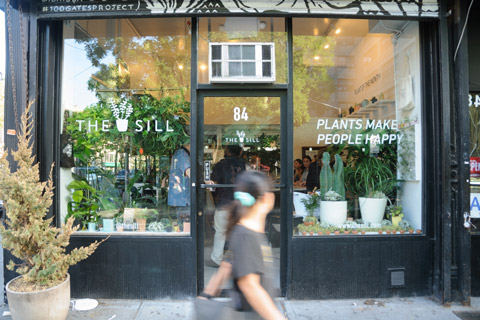 Erin Marino, director of brand marketing, believes houseplants started trending once they began glamming the backgrounds of social media posts and fashion and lifestyle magazines. “The photos were being shared and people were gravitating towards them,” Erin says. “[Readers] got a lot of design inspiration and wanted to recreate that.”
Erin Marino, director of brand marketing, believes houseplants started trending once they began glamming the backgrounds of social media posts and fashion and lifestyle magazines. “The photos were being shared and people were gravitating towards them,” Erin says. “[Readers] got a lot of design inspiration and wanted to recreate that.”
Sales skew toward women (60% to 70%) most of whom live on the East and West Coasts. Most are between the ages of 18-34. The weekly workshops at the Chinatown store location, however, attract folks from the age of 17 into their 70s. A Millennial herself, Erin feels people her age know that bringing plants into a home or work space is beneficial, not just for health but for mental wellness, too; caring for a plant is something to be proud of and makes you happy. Houseplants also provide a learning experience, something that folks her age crave after leaving school. “Plus,” Erin says, “if you work 9-6, you’re not going to get a dog so you might as well fill your space with plants that make you happy.”
As for what plants are popular, Erin has noticed a change since they opened in 2012. Succulents had been the top seller then, but now fiddle-leaf figs and sansevierias are all the rage, with calatheas the newest up-and-comers. While The Sill was happily surprised by the houseplant trend among Millennials, their hope is to cater to everyone and get them all excited about houseplants, from little kids to older adults.
Pictured: Beginning as an online-only retailer, The Sill opened a storefront in New York City’s Chinatown neighborhood to offer customers easy access to both houseplants and hands-on workshops.
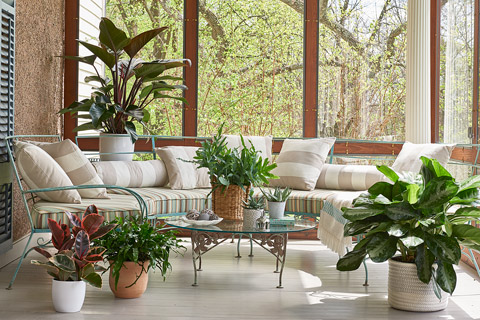
The E-Commercer
Connecticut-based mail-order nursery White Flower Farm has been offering tropical foliage plants since their latest catalog came out this past August. Why tropicals and why now, I asked their marketing director Eliot Wadsworth. “We saw how excited people were about these plants on Instagram and all of these lifestyle blogs. It just became overwhelmingly obvious that there was an appetite for this sort of stuff.” They didn’t see too many other online resources for acquiring tropicals and houseplants, “and we thought maybe there was a little niche for us to play in,” Eliot explained.
As for why there’s been an interest in these plants, Eliot thinks it may be that there’s screen or device fatigue, and that houseplants offer something that is restorative without being battery powered. “And these are actually really beautiful things to have around you,” he adds. “That’s how we’re trying to frame them—as not terribly complicated, don’t require a degree to take care of and are really lovely friends to have around your house.”
Tropical foliage sales have been good for White Flower Farm so far, with sales of bigger floor-sized plants such as philodendrons and fiddle-leaf fig selling better than the smaller items. “When people are opening these boxes I think they’re going to be really happy with what they are paying for.”
Pictured: White Flower Farm’s e-commerce site puts houseplants in elegant and aspirational settings, encouraging customers to try the same in their own homes. Photo credit: White Flower Farm.
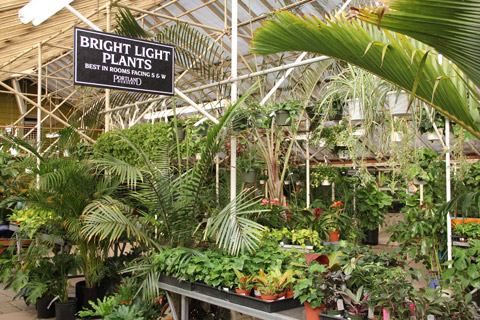
The Garden Center
Jill Dunsmuir, co-owner of Portland Nursery in Portland, Oregon, has seen sales of houseplants rise dramatically over the last year. Her thought is that it has to do with people moving into the city and being able to own or rent small apartments or homes. Many of those moving into the city are Millennials, and they are shifting towards houseplants. “I’m one those people,” Jill says. “I freak out over houseplants.”
Portland Nursery has three large houseplant houses and they are considering adding more sales space to meet demand. Like Lisa, Jill also sees more sales of succulents and cacti but sees price being a factor. Houseplants selling the best are those around $3.99.
While the debate continues about how best to attract Millennials to garden centers, Jill is keeping Portland Nursery’s solution simple: “They are coming to us for plants, and we want to be able to provide them with the widest selection of them.” So while sales of houseplant accessories—pottery, houseplant soils—are also up, Portland Nursery has been focusing on providing the best variety of houseplants possible.
Pictured: At Portland Nursery, signage explaining the plants’ preferred light conditions helps customers pick the right plants for their situation, helping the customers be more successful indoor gardeners.
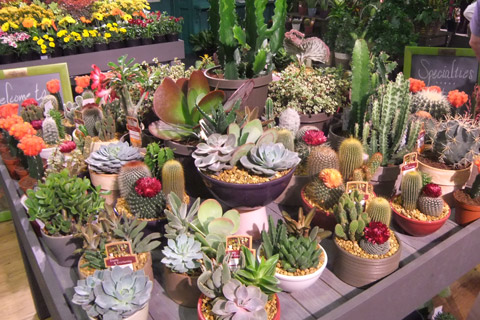
The Grower
Charlie Acevedo, Vice President Sales and Marketing for Costa Farms in Homestead, Florida, agrees with Jill about where the demand for houseplants is coming from. “Every urban market is exploding with rental units and apartment buildings,” Charlie says, and that follows the fact that younger adults are having to wait longer before buying property for various reasons. Small rental units are prime real estate for houseplants. Young adults are delaying investments requiring big commitments in time and money. “It’s interesting to see when a consumer succeeds with a houseplant. It gives them a sense of satisfaction and nurturing for a living thing; similar to owning a pet but with less of a commitment,” added Charlie.
Other good news is that Costa Farms’ O2 For You campaign touting the health benefits of indoor plants is hitting the mark with these young adult consumers. Costa’s recently concluded Millennial Consumer study shows that while Millennials’ top two reasons for buying houseplants are for décor and for gifting, the third reason is for the health benefits of those plants. “It’s starting to resonate, especially with the young consumer,” Charlie says. “They are more health conscious.”
Charlie says Costa Farms has seen growth in all major urban markets. This is not a regional phenomenon. “We are seeing a trend across the country,” Charlie notes. “And that’s the beauty of it. When I see that type of performance it tells me it’s real.”
Pictured: Costa Farms’s recently concluded Millennial Consumer study found that the Millennial consumer’s top two reasons for buying houseplants are for décor and gifting.
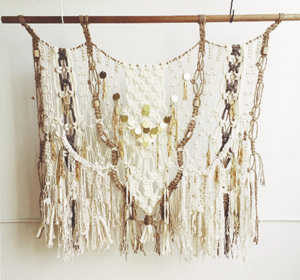
Knot Going Anywhere
Houseplants and macramé go together like chocolate and peanut butter. Having been a popular craft and product in the 1970s, the art of tying knots using textiles to create anything from wall hangings to clothing—and of course, plant hangers—is seeing a resurgence.
Emily Katz, founder of Modern Macrame, got interested in the craft because, with about 100 houseplants at home, “we needed a way to get them off the floors and shelves,” she says. And the skill has only added to her houseplant obsession, she admits.
But the craft was more than a way to make something of her own. “We’re so connected to technology that we are less connected to ourselves,” Emily says. “Macrame became my way to connect not only with myself but also with other people who are interested in crafts.”
Modern Macrame’s products and services cover the gamut of possibilities. They do everything from high-end custom corporate installations of wall hangings to workshops and online product sales. They do a hefty business in DIY supplies, too, with the plant hanger DIY kits handily outselling the wall hanging kits. That’s good news for us!
And it could be good news for you, too. Emily Katz has an instructional book coming out in May and her publisher (Ten Speed Press) is taking orders now. Pair that with a selection of Modern Macrame DIY kits in front of your houseplant department and host an event to appeal to your more knotty customers. GP